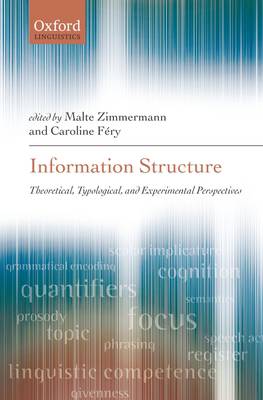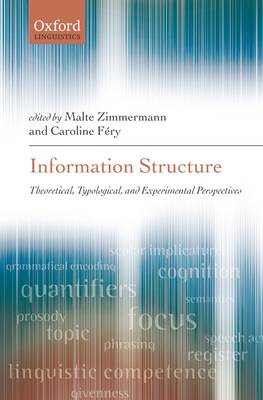
Door een staking bij bpost kan je online bestelling op dit moment iets langer onderweg zijn dan voorzien. Dringend iets nodig? Onze winkels ontvangen jou met open armen!
- Afhalen na 1 uur in een winkel met voorraad
- Gratis thuislevering in België vanaf € 30
- Ruim aanbod met 7 miljoen producten
Door een staking bij bpost kan je online bestelling op dit moment iets langer onderweg zijn dan voorzien. Dringend iets nodig? Onze winkels ontvangen jou met open armen!
- Afhalen na 1 uur in een winkel met voorraad
- Gratis thuislevering in België vanaf € 30
- Ruim aanbod met 7 miljoen producten
Zoeken
Information Structure
Theoretical, Typological, and Experimental Perspectives
€ 217,95
+ 435 punten
Omschrijving
In this book leading scholars provide state-of-the-art overviews of approaches to the formal expression of information structure in natural language and its interaction with general principles of human cognition and communication. They present critical accounts of current understanding of how aspects of grammar, such as prosody, syntax, morphology, semantics, and pragmatics, interact in the packing and unpacking of information in communication. They also look at the psycholinguistics behind the production and perception of information-structural categories. The book reflects the advances in recent research on all central aspects of the subject, including concepts of focus versus background, topic versus comment, and given versus new, and the kinds of inferences required to make sense of different combinations of words, syntax, intonation, and context. The chapters include typological and diachronic perspectives on information structure. Taken as a whole the book demonstrates the productive value of combining.
Specificaties
Betrokkenen
- Uitgeverij:
Inhoud
- Aantal bladzijden:
- 430
- Taal:
- Engels
- Reeks:
Eigenschappen
- Productcode (EAN):
- 9780199570959
- Verschijningsdatum:
- 20/12/2009
- Uitvoering:
- Hardcover
- Formaat:
- Ongenaaid / garenloos gebonden
- Afmetingen:
- 157 mm x 234 mm
- Gewicht:
- 793 g

Alleen bij Standaard Boekhandel
+ 435 punten op je klantenkaart van Standaard Boekhandel
Beoordelingen
We publiceren alleen reviews die voldoen aan de voorwaarden voor reviews. Bekijk onze voorwaarden voor reviews.










